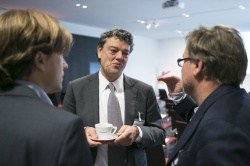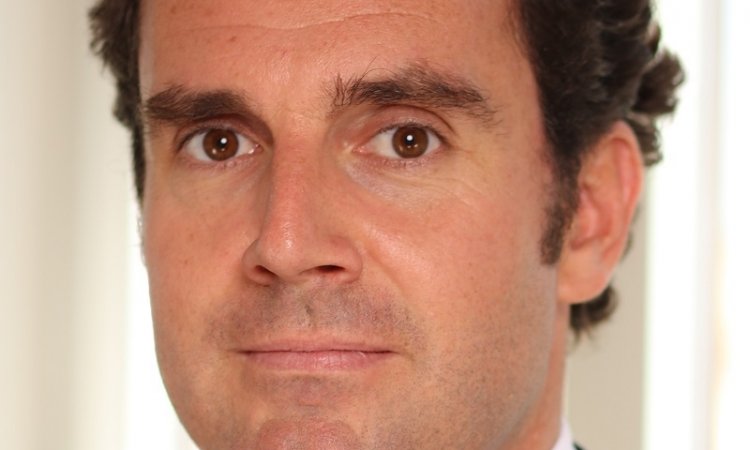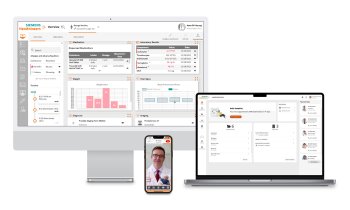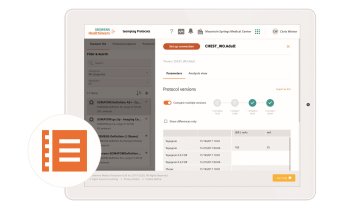Procurement
Fundus screening enters shopping centres
Telemedicine is taking strides throughout Europe. While in Germany telemedicine projects appear to be off to a slow start (see the electronic health card), in other countries progress is going full throttle. In September, at the German-Dutch symposium ‘Using optimisation potential: Telemedicine and procurement management’ a number of Dutch approaches were presented.
Report: Sylvia Schulz

In the Netherlands, the National Expert Centre for Standardisation in E-health (Nictiz) was founded in 2002 to assist the Dutch government in e-health implementation. Ambitious targets were set and scheduled for completion by 2019; inter alia:
- 80% of the chronically ill have access to their patent record via Smartphone app or internet
- 75% of the chronically ill can measure certain parameters themselves, e.g. diabetes patients, and forward the data to physicians or other healthcare providers
- Every patient receiving homecare can access a physician 24/7 via a monitor.
The annual reports published by Nictiz to document the progress indicate that the Dutch are indeed far from reaching their defined goals. To date, only 10% of the chronically ill have electronic access to their patient record. In addition, while an impressive 40% of the chronically ill perform their own measurements, only 5% of the patients forward the data to the healthcare providers.
However, Dutch people increasingly accept telemedicine. The KSYOS TeleMedical Centre, a ‘virtual’ hospital located in Amstelveen, is a telemedicine services success story. The company now employs more than seven thousand physicians and paramedics.
The Centre provides care exclusively with the use of ICT. ‘Through these innovative services, care is delivered independent of time and place and with the data travelling, rather than the patient: better, faster care, close to the patient at a lower cost,’ says Professor Leonard Witkamp, director of the KSYOS TeleMedical Centre since 2005. Witkamp was also named professor by special appointment of Telemedicine at the University of Amsterdam’s Faculty of Medicine (AMC-UvA) – a chair established on behalf of the Royal Dutch Medical Association (KNMG).
There are currently several successful telemedicine services implemented by the Centre, such as Telefundus screening in diabetes and teledermatology. Diabetics previously had to see an ophthalmologist for their annual retina screening. Today, these patients go to an optometrist located in their neighbourhood shopping centre, where digital images are taken of the retina. These are assessed locally or remotely within two hours by a team of optometrists.
The local ophthalmologist randomly and anonymously inspects the quality of the images and the assessment. Abnormal cases are presented to the patient’s general practitioner (GP), who may refer these digitally to the local ophthalmologist by teleophthalmology consultation. Where previously 100% of patients went to the ophthalmologist, now only four percent are physically referred. ‘A huge improvement and acceleration of efficient care delivery at lower costs,’ Witkamp notes.
Although teleconsultation is rolled out in many different medical specialties, teledermatology, as one of the first successful services, presents a fine example. The GP opens the patient’s record, inserts the skin images obtained and adds medical information. These findings are then submitted to the dermatologist remotely, and together the doctors make a final diagnosis and establish a treatment plan.
Over 200,000 teleconsultations since 2005 show that teledermatology, provided the GP selects suitable patients, leads to a 74 percent reduction of physical referrals, with an average response time of 4.6 hours (median 2.0 hours). According to Witkamp, ‘Savings of 20 to 40 percent in healthcare costs’ are realised ‘by improved efficiency and quality’.
The role of hospitals will become more specialised, as Leonard Witkamp predicts: ‘Telemedicine will allow hospitals to focus on difficult and serious cases and the socially disadvantaged patients. In many centres throughout the region, GPs, pharmacists, opticians, physiotherapists and others will deliver more routine care under the remote direction and supervision of the doctor and specialist.’
17.11.2015









